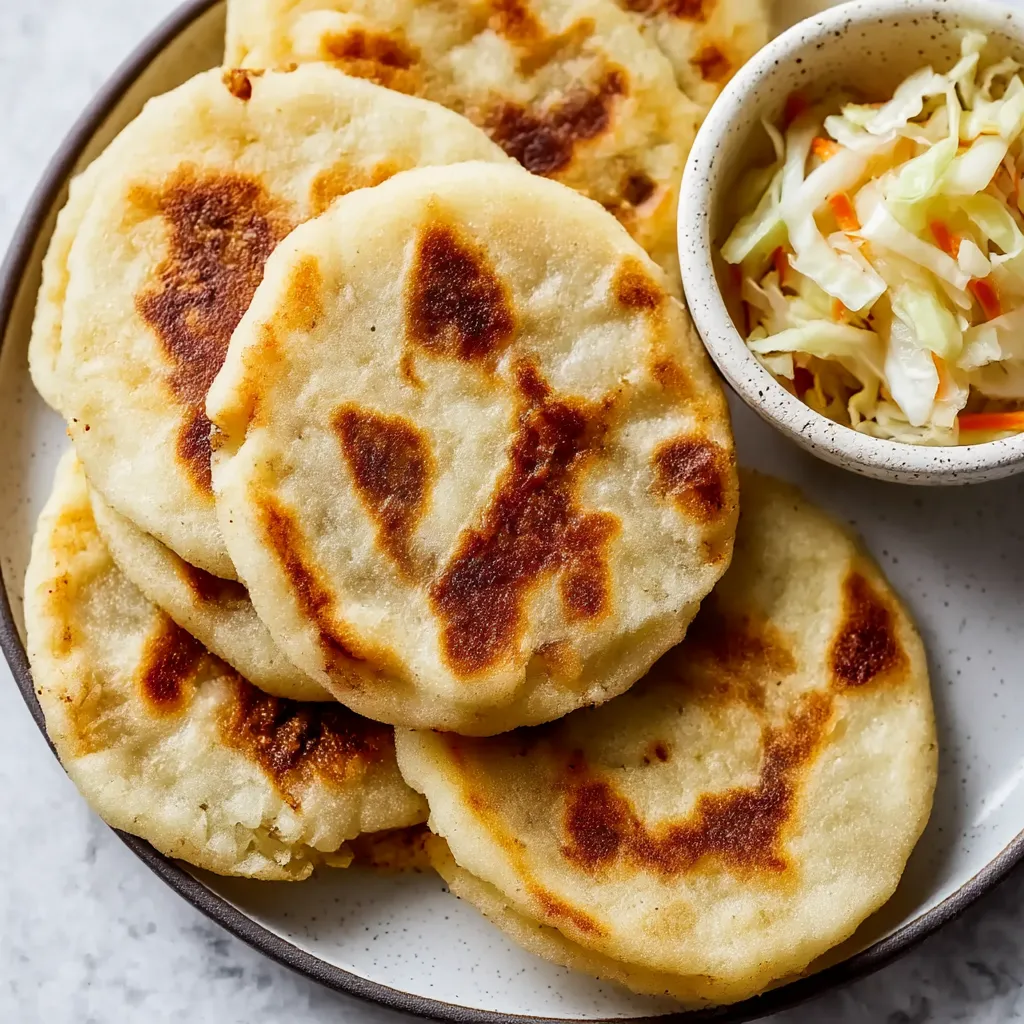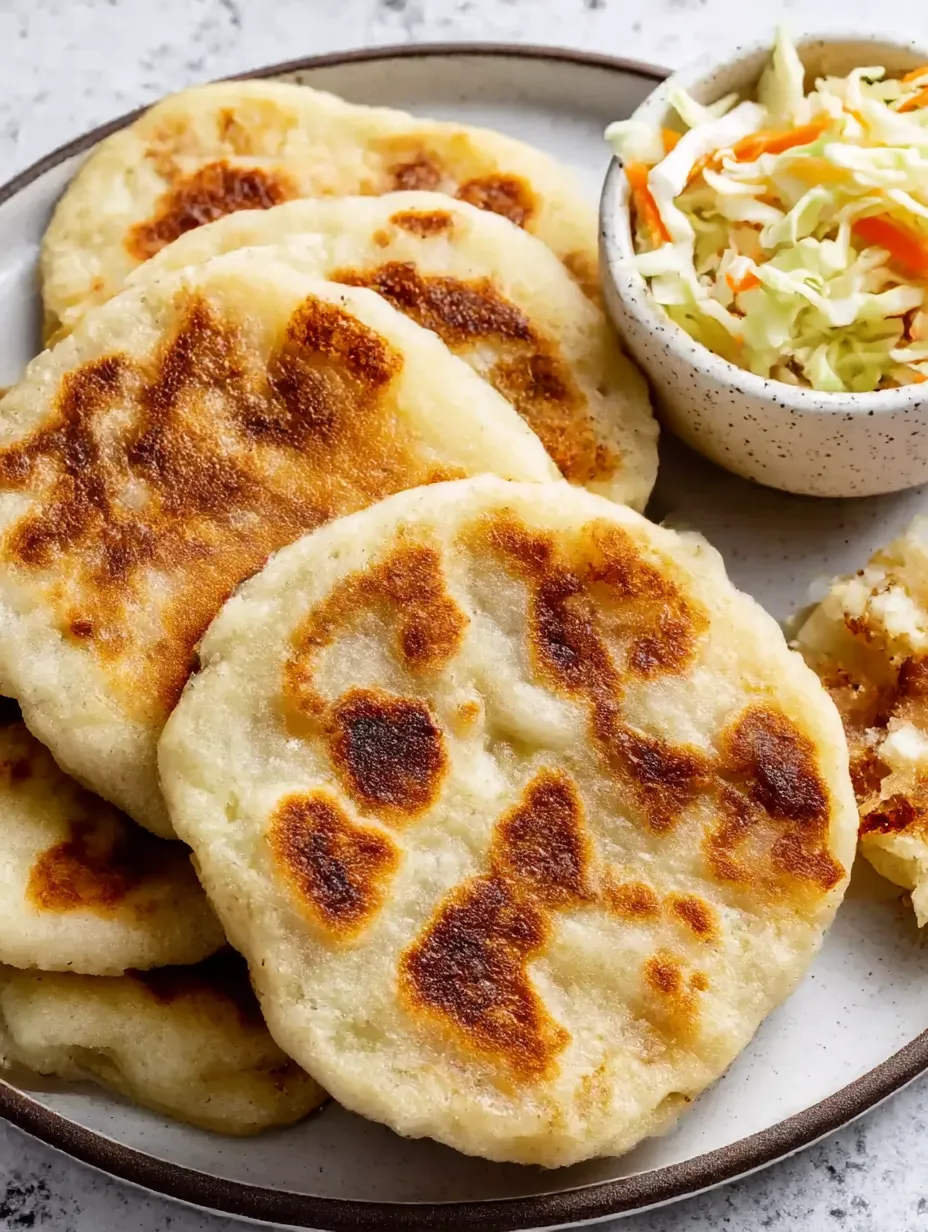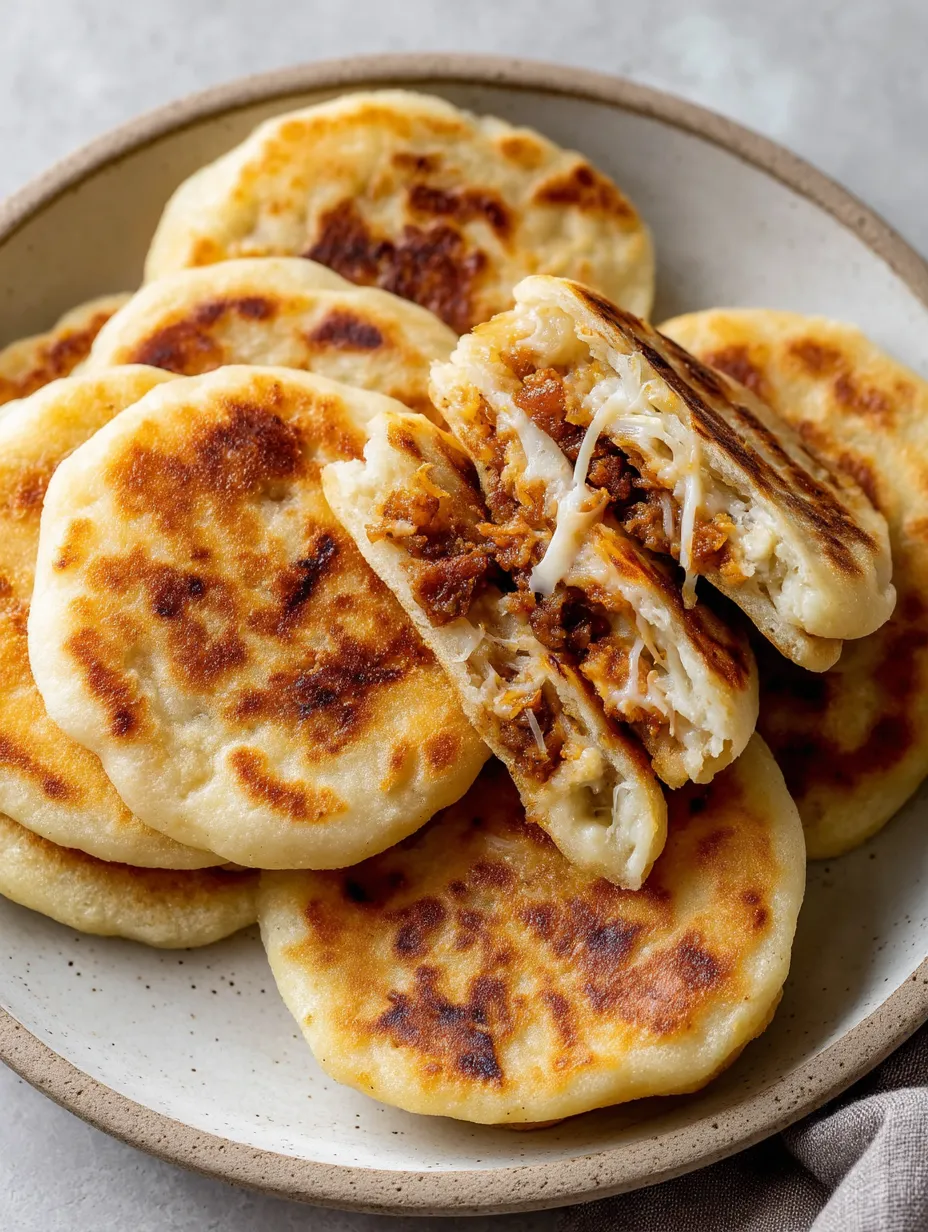 Pin it
Pin it
These handcrafted Salvadoran pupusas feature fluffy corn pockets stuffed with flavorful beans and gooey cheese. I picked up this genuine method from my friend whose relatives brought their cooking know-how directly from El Salvador. The mix of the slightly crunchy outside and melty inside makes them perfect for any time you're hungry.
The first time I whipped these up at our block party, they vanished right away. They've become my favorite comfort dish whenever I want something filling that doesn't take forever to make.
Ingredients
- 3 cups masa harina: makes the traditional corn base - grab the finely ground type for smooth results
- 2 teaspoon salt: brings out the corn taste in the dough
- 2 ¾ cups warm water: gets the masa going for just the right texture
- 2 tablespoon avocado oil: gives a mild taste when cooking
- 15 oz refried beans: creates the smooth part of the filling
- 1 packet chicken seasoning: try to get Goya for that real flavor kick
- 1 cups shredded mozzarella cheese: gives that wonderful pull when melted
- ½ head green cabbage: starts off the curtido topping
- 1 large carrot: adds a bit of sweetness to the curtido
- ½ onion: puts some bite into the curtido mix
- White vinegar: makes that zingy flavor in the curtido
Step-by-Step Instructions
- Prepare the Curtido:
- Get some water boiling in a big pot and toss in the cabbage until it gets soft. Save half cup of the water before draining. Mix the cabbage with the onion, carrot, salt, vinegar and that hot water you kept. Let it hang out while you make the pupusas so the flavors can get friendly. It'll taste even better the longer it sits.
- Mix the Filling:
- Stir together the cheese, chicken seasoning and refried beans until they're all mixed up good. You want this mix thick enough to stay in place when you scoop it up but not so stiff it'll tear your dough. That seasoning really makes simple stuff taste amazing.
- Prepare the Dough:
- Put your masa harina and salt in a big bowl. Slowly pour in warm water, about a cup at a time, and use your hands to mix it all up. When it's done right, it should feel like play dough - smooth and easy to work with but not sticky. If it seems too dry, just add a bit more water, one spoon at a time.
- Form the Pupusas:
- Grab a small chunk of dough and flatten it into a circle about 4 inches across. Make a little dent in the middle with your fingers. Put in 1 or 2 spoons of filling then carefully pull the edges up to wrap around the filling. Gently press between your hands to make it flat again, about half inch thick, making sure the filling stays inside.
- Cook the Pupusas:
- Get your skillet hot with some oil over medium heat. Put the pupusas in without crowding them, and cook 2-3 minutes on each side until they're golden with crispy edges but still soft inside. A perfect pupusa has a little browning on both sides and the cheese inside is all melty.
- Serve and Enjoy:
- Put the hot pupusas on plates with some cool curtido on top and salsa roja if you've got it. The mix of the warm pupusa with the cool tangy curtido makes that perfect bite that folks in El Salvador have enjoyed forever.
 Pin it
Pin it
I really love when the cheese sneaks out while cooking and gets all crispy around the edges. My kids always grab for those bits first, which reminds me of how my grandma would save those crunchy pieces just for me back when I was little.
Storage Tips
You can keep leftover pupusas in the fridge for about 3 days if they're in a sealed container. When you want to heat them up again, don't use the microwave because they'll get soggy. Instead, warm them in a dry pan over medium heat. If you want to keep them longer, you can freeze the shaped raw pupusas with some parchment paper between them in a freezer bag for up to 3 months. Just cook them straight from frozen, giving them an extra minute on each side. Keep the curtido in the fridge separately where it'll actually get a bit tastier as it sits and lightly ferments.
Troubleshooting Common Issues
If your dough keeps breaking apart, it needs more water. Just add a spoonful at a time until it feels like play dough. When the filling spills out while you're cooking, you probably put too much in or didn't close it up right. Start with less filling until you get the hang of it. A lot of people make pupusas too thin and then the filling breaks through. Try to keep them about half inch thick for best results. Don't worry if they're not perfect at first. Making pupusas gets easier each time you do it as your hands learn the right moves.
Cultural Significance
Pupusas are El Salvador's national food and go back more than 2000 years to before Columbus arrived. The Pipil tribes first made them with flowers and local veggies. Now they stand for cultural pride among Salvadorans everywhere, and there are even whole festivals just for celebrating this simple but amazing food. Back in 2005, El Salvador's government made the second Sunday in November National Pupusa Day, which shows how much this food means to the country. People came up with the curtido topping to add some zing and help with digestion, making pupusas a full meal that covers all your nutrition bases.
 Pin it
Pin it
Frequently Asked Questions
- → How would you explain masa harina?
Masa harina is finely milled corn flour treated with limewater. It’s a go-to for Latin American dishes like tortillas or pupusas.
- → Are pupusas okay for gluten-free diets?
Yes! Since they're made from masa harina (which is corn-based), they're naturally gluten-free.
- → What’s curtido, and how does it work with this dish?
Curtido is a pickled veggie slaw made from cabbage, carrots, and onions. It’s tangy and crunchy, complementing pupusas perfectly.
- → Can I mix up the fillings?
Of course! Popular choices include pork, zucchini, or combining veggies with cheese. You can tweak the filling to suit your taste.
- → Which oil is best for frying pupusas?
Avocado oil is a great pick, but any neutral oil like canola or vegetable works just fine.
